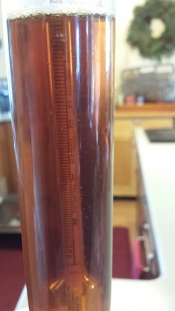EastAtLeast
Member
- Joined
- Mar 23, 2015
- Messages
- 5
- Reaction score
- 1
Brewed my first extract kit (and extra IPA) last Tuesday, it has now been 6 full days since I started fermentation (my OG reading: 1.076 ; kit suggested 1.070 - 1.074). The airlock bubbles every 20 - 25 seconds. It seems like fermentation is winding down so I decided to take a SG reading today. It read 1.020 (recommended FG for kit range: 1.016 - 1.019). Since I started on the high end for my OG, should I expect that my FG will finish on the high end? If I take and SG reading tomorrow, and it doesn't change from today's reading, am I ready to rack to my secondary? I was searching for info on this, but it seems that some people only like to do the primary fermentation, but my local brew store guy and my kit say it's better to rack it to the secondary, the printed instructions just don't make sense (they say when you don't see bubbles in the airlock for 48 hours) I know they don't expect me to stare at the airlock for 2 days straight, so what do you recommend?














































![Craft A Brew - Safale S-04 Dry Yeast - Fermentis - English Ale Dry Yeast - For English and American Ales and Hard Apple Ciders - Ingredients for Home Brewing - Beer Making Supplies - [1 Pack]](https://m.media-amazon.com/images/I/41fVGNh6JfL._SL500_.jpg)














